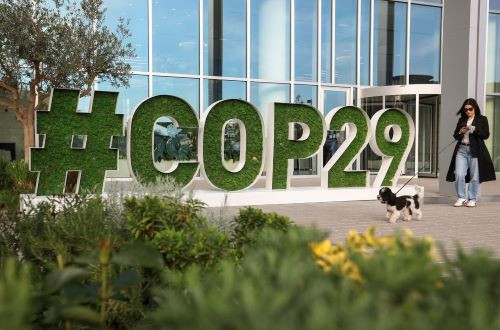Popular Reads
Top Results
Can't find what you're looking for?
View all search resultsPopular Reads
Top Results
Can't find what you're looking for?
View all search resultsCan COP29 deliver climate justice and finance for the Global South?
The focus of this year's UN Climate Change Conference is financing; specifically, setting an annual amount and devising an integrated sourcing scheme to ensure that the burden of addressing climate vulnerabilities does not fall on countries in the Global South, which contribute just one-tenth of global emissions.
Change text size
Gift Premium Articles
to Anyone
T
he 29th Conference of the Parties to the UN Framework Convention on Climate Change (COP29), scheduled to take place in Baku, Azerbaijan, from Nov 11 to 22, is a pivotal opportunity to accelerate climate action.
With record-high global temperatures affecting developing countries of the Global South and extreme weather events impacting communities worldwide, COP29 will bring together leaders from governments, businesses and civil society to advance concrete solutions to the defining crisis of our time.
Known as the “Finance COP”, this year’s climate conference will see 198 parties convene for the first time in 15 years to set a new global climate finance target. Central discussions in Baku will focus on enhancing climate ambitions for the Global South and enabling finance flows from the Global North to support these efforts.
Low-income economies across Asia, Africa and Latin America contribute just one-tenth of global greenhouse gas (GHG) emissions, but are the most heavily impacted by climate change. Meanwhile, middle-income emerging economies like China, India, Indonesia, Brazil and South Africa will likely increase their global share of emissions as populations grow and infrastructure developmental needs intensify across the energy, transportation and agriculture sectors.
The funding for climate-resilient growth in the Global South is expected to come in the form of the New Collective Quantified Goal (NCQG) as the successor to the US$100 billion finance target set in 2009, which was only recently met in 2022.
However, even this amount is grossly inadequate. Studies estimate that, even after deploying their own resources, developing countries require an additional $500 billion, at least five times the current commitment, and up to $1 trillion annually in climate finance from international sources for both mitigation and adaptation.
With current finance gaps projected to reach nearly $200 trillion, COP29 must strive to secure a combination of conventional public financing, reformed multilateral development bank (MDB) contributions and market-based private financing.



















